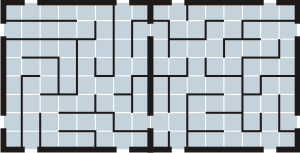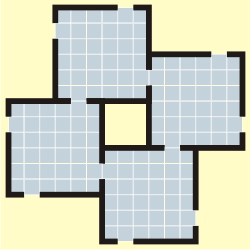I admire games in which players generate terrain on their own either in a setup phase, or as the game goes on, strategically, because I am of the impression that it keeps things fresh - and potentially eliminates the need for a gm in an adventure game.
I envision a dungeon crawl with four-six players. I like freeform, make-it-up as you go sort of stuff, but I acknowledge how much that can screw up a game once you introduce true competition to it, i.e., as soon as there's a real goal to be had, players would start inventing impossible tasks for their comrades.
Brainstorm with me on how one might create a game in which players create a board, or a board and scenario as they move through it. The simplest way I can imagine would be a "deck" of tiles/cards that one draws from whenever they open a door. They draw a new room, or a hallway and then a room, or hallways and rooms are treated in identical manners - but whatever they do they place it on the table connecting to whatever door they just opened.
Ideas?













